- Forum
- General Discussion | Introductions | Off Topic Forum
- Photography General Discussion
- Portraits with moon as back ground
Portraits with moon as back ground
-
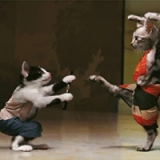 Topic Author
Topic Author
- Marin Chi
- Snapobsessed
-
- Nikon D750
- Followers: 115
- Posts: 306
-
Points:
3206
-
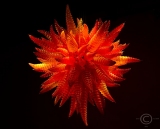
- John Landolfi
- Super User
-
- Nikon D3S, D7100, Sony RX10, Canon G11, F4s, F2sb, RetinaflexIV etc, etc
- Followers: 1205
- Posts: 21605
-
Points:
40394
Post #299556
Post #299566
-

- John Landolfi
- Super User
-
- Nikon D3S, D7100, Sony RX10, Canon G11, F4s, F2sb, RetinaflexIV etc, etc
- Followers: 1205
- Posts: 21605
-
Points:
40394
Post #299568
Joves wrote: I hate to disagree, it can be done with the right lens. To get the moon large enough you need a long lens 300 to 500 mms. You then have to stand off far enough to get both the subject, and the moon as desired in the frame. Then for your subject you will need your lighting, which is not a problem with radio triggers if you have them, and the triggers will work at the distance you need to be from the subject. Your focus is on the subject, and your metering is the moon. You will have to close up your lens for greater depth of field, but it will work. You can experiment with it using anything when the moon rises or sets, and lights to get a feel for it. You can get the effect at 200mm even but the moon will naturally not be as large. Either way you must have additional lighting.
I agree about the need for additional lighting. About the rest, I am not convinced that, if you stand far enough with a 300-500 mm lens to get subject and moon in the frame, you'll have a portrait where the subject is clearly identifiable and featured (my understanding of "portrait"). If, as you say, the focus is on the subject, I am not convinced you will get the detail Marin seems to be asking for in the moon (craters and such). even though the DOF may reach infinity, i don't think the lens will resolve such details sufficiently if focus is on the subject. And, of course, I stand to be corrected, perhaps with an example?
-
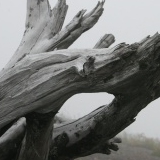
- StephanieW
- Photography Hooked
-
- Canon 30D
- Followers: 11
- Posts: 852
-
Points:
0
Post #299588
-
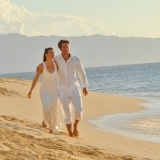
- Flash Steven
- The Lounger
- Canon 7D and Canon 40D
- Followers: 195
- Posts: 1079
-
Points:
4862
Post #299630
StephanieW wrote: The next full moon is on Oct 29th, but someone should totally go test this and get back to us. Seems like it'd be a cool shot if it's even possible.
Field trips for all! I'm going to have to try this as I'm intrigued about the possibilities. With the nights coming earlier, it will be easier for me to recruit my wife into coming out for my model.
Canon 7D w/grip, Canon 40D, Canon 70-200mm f2.8 IS L Canon MPE 65mm f2.8 macro; Sigma 70-300mm f2.8; Sigma 150mm f2.8 macro; Sigma 8-16mm f4.5-5.6
-

- John Landolfi
- Super User
-
- Nikon D3S, D7100, Sony RX10, Canon G11, F4s, F2sb, RetinaflexIV etc, etc
- Followers: 1205
- Posts: 21605
-
Points:
40394
Post #299704
John Landolfi wrote:
Joves wrote: I hate to disagree, it can be done with the right lens. To get the moon large enough you need a long lens 300 to 500 mms. You then have to stand off far enough to get both the subject, and the moon as desired in the frame. Then for your subject you will need your lighting, which is not a problem with radio triggers if you have them, and the triggers will work at the distance you need to be from the subject. Your focus is on the subject, and your metering is the moon. You will have to close up your lens for greater depth of field, but it will work. You can experiment with it using anything when the moon rises or sets, and lights to get a feel for it. You can get the effect at 200mm even but the moon will naturally not be as large. Either way you must have additional lighting.
I agree about the need for additional lighting. About the rest, I am not convinced that, if you stand far enough with a 300-500 mm lens to get subject and moon in the frame, you'll have a portrait where the subject is clearly identifiable and featured (my understanding of "portrait"). If, as you say, the focus is on the subject, I am not convinced you will get the detail Marin seems to be asking for in the moon (craters and such). even though the DOF may reach infinity, i don't think the lens will resolve such details sufficiently if focus is on the subject. And, of course, I stand to be corrected, perhaps with an example?
The question is it is possible and it is. Now the real question should be is it practical, and the answer is no.
If the model is at infinity then getting them in focus as well as the moon in a larger size is easy. It would require a full length portrait, and to get what you want will require a good crop. The distance varies with the focal length of the lens, or in the case of a zoom the lens itself. For example my 80-400 lens is at infinity at about 120 ft. So you need to be say 120 ft+ from the model, and the plus is better for greater depth of field at 400mm. You then get the tele-flattening effect of drawing the moon in while enlarging it. It is just like controlling the distance of distant object in the background of a landscape with an object in it. Same principles apply. Your depth of field is controlled by you f-stop as usual. You will probably have to start at f/10. Flashes on triggers depending on the distance may not work, so constant lighting is best, and because of the distance will not even show up. Well unless there is a mist, or dust in the air. Also your moon has to be rising, or setting naturally. It can be done, but being totally practical no. I would rather add it in as you said. Then you have maximum control of it.
-
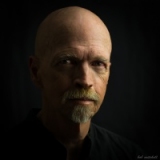
- hghlndr6
- Master of the Lens
- Nikon: P510, D600, D7100
- Followers: 1222
- Posts: 1650
-
Points:
28119
Post #299706
StephanieW wrote: The next full moon is on Oct 29th, but someone should totally go test this and get back to us. Seems like it'd be a cool shot if it's even possible.
Don't wait 'til the 29th. Moon looks pretty full right now. I just checked and it will be full tomorrow, 18Oct at 1937.
-

- John Landolfi
- Super User
-
- Nikon D3S, D7100, Sony RX10, Canon G11, F4s, F2sb, RetinaflexIV etc, etc
- Followers: 1205
- Posts: 21605
-
Points:
40394
Post #299709
Joves wrote:
John Landolfi wrote:
Joves wrote: I hate to disagree, it can be done with the right lens. To get the moon large enough you need a long lens 300 to 500 mms. You then have to stand off far enough to get both the subject, and the moon as desired in the frame. Then for your subject you will need your lighting, which is not a problem with radio triggers if you have them, and the triggers will work at the distance you need to be from the subject. Your focus is on the subject, and your metering is the moon. You will have to close up your lens for greater depth of field, but it will work. You can experiment with it using anything when the moon rises or sets, and lights to get a feel for it. You can get the effect at 200mm even but the moon will naturally not be as large. Either way you must have additional lighting.
I agree about the need for additional lighting. About the rest, I am not convinced that, if you stand far enough with a 300-500 mm lens to get subject and moon in the frame, you'll have a portrait where the subject is clearly identifiable and featured (my understanding of "portrait"). If, as you say, the focus is on the subject, I am not convinced you will get the detail Marin seems to be asking for in the moon (craters and such). even though the DOF may reach infinity, i don't think the lens will resolve such details sufficiently if focus is on the subject. And, of course, I stand to be corrected, perhaps with an example?
The question is it is possible and it is. Now the real question should be is it practical, and the answer is no.
If the model is at infinity then getting them in focus as well as the moon in a larger size is easy. It would require a full length portrait, and to get what you want will require a good crop. The distance varies with the focal length of the lens, or in the case of a zoom the lens itself. For example my 80-400 lens is at infinity at about 120 ft. So you need to be say 120 ft+ from the model, and the plus is better for greater depth of field at 400mm. You then get the tele-flattening effect of drawing the moon in while enlarging it. It is just like controlling the distance of distant object in the background of a landscape with an object in it. Same principles apply. Your depth of field is controlled by you f-stop as usual. You will probably have to start at f/10. Flashes on triggers depending on the distance may not work, so constant lighting is best, and because of the distance will not even show up. Well unless there is a mist, or dust in the air. Also your moon has to be rising, or setting naturally. It can be done, but being totally practical no. I would rather add it in as you said. Then you have maximum control of it.
Hmmm. do I stand...."uncorrected", Dennis? The original question asked for a portrait (at 120 feet....well...), and the moon in focus and with detail (craters). Not simply "can you get both a person and the moon into one frame"..And, we seem to agree that the answer to the question asked would be 'no". Just the same, I'd like to see the result of trying it. It would be very interesting and a learning opportunity if I were proved wrong!
Post #299713
In my opinion it would be best to shoot when the moon is in one of its phases near half where you get the light&dark effect from it. Full moons suck. The majority of us do not drag out our telescopes for a full one because it is so flat looking. Also if I was doing this for a client, and have never done shots like these before, I would not even try it. Not for a paid gig. I have shot landscapes doing it, and had many stinkers while learning the process. That is why it is not practical.
-

- Stealthy Ninja
- Moderator
-
- Fuji X stuff and a 1DsIII for some reason
- Followers: 982
- Posts: 16300
-
Points:
6837
Post #299747
-

- John Landolfi
- Super User
-
- Nikon D3S, D7100, Sony RX10, Canon G11, F4s, F2sb, RetinaflexIV etc, etc
- Followers: 1205
- Posts: 21605
-
Points:
40394
Post #299849
Joves wrote: No you can do it. That is the correct answer. Now what you suggested is far more practical, there is a difference. Shooting a model with the moon in the frame and in focus is achievable, but what is required to do it is not practical. On scapes it is more simple than with a human subject, the optical principles do not change, only the subject changes, and what is more practical for the given subject. In reality you will never get craters on a full moon with even a 400mm lens, the craters themselves require an even longer lens than that. A 600mm may give you some nice detailing of them, but an 800 to 1200 would be best. You will not get great crater detail on short long lenses, you will see some, but not on a full moon. But you can get a fairly detailed moon in a shot with a subject in the foreground, and have both focused correctly. It really boils down to how much effort you want to put into it. Or actually how much effort is really practical for a given shot.
In my opinion it would be best to shoot when the moon is in one of its phases near half where you get the light&dark effect from it. Full moons suck. The majority of us do not drag out our telescopes for a full one because it is so flat looking. Also if I was doing this for a client, and have never done shots like these before, I would not even try it. Not for a paid gig. I have shot landscapes doing it, and had many stinkers while learning the process. That is why it is not practical.
Let me explain my misgivings. And, again, I point out that what Marin asked for was detail in both the portrait and the moon, with craters. I do not for a moment question your discussion of questions of astrophotography, of which you are obviously an expert. Let me use my 300mm f/4 as an example. If it is focused at, say 100ft at f/11, the DOF is from 85ft to 120 ft approximately. I am skeptical that the moon would be rendered with any detail approaching what Marin seems to be asking for. If the portrait needs to be in sharp focus (eyes), I don't think the moon would be. I hope someone does try it!
-

- StephanieW
- Photography Hooked
-
- Canon 30D
- Followers: 11
- Posts: 852
-
Points:
0
Post #299852
- Forum
- General Discussion | Introductions | Off Topic Forum
- Photography General Discussion
- Portraits with moon as back ground
Latest Reviews
The Fujifilm XT5 is a 40MP mirrorless camera capable of 6.2K video at 30p. With those specs, it’s an ideal choice for photographers needing a camera to pull double duty for imaging and video.
The Canon EOS R100 is an entry-level mirrorless camera introduced in 2023. But just because it’s an entry-level camera doesn’t mean it’s a bare-bones camera. Find out why in this review!
Nikon’s retro-looking Nikon Zfc is anything but retro. Under its classic body is a host of features and amenities that make it a worthwhile compact mirrorless camera for 2024.
The Canon EOS R50 is one of the newest R-system cameras from Canon. Is it worth your money? Find out all the details you need to know in this comprehensive review.
Forum Top Posters
-
1TCav 10 posts
-
2CharleyL 6 posts
-
3Sawyer 5 posts
-
4db3348 3 posts
-
5Jason Stevens 3 posts
-
6Randy Shaw 3 posts
-
7Razky 3 posts
-
8Hassner 3 posts
-
9AstralArti... 3 posts
-
10Tristan R 3 posts
Latest Articles
The Nikon D850 might be an older DSLR, but it was ahead of its time when it debuted in 2017. That means it still has plenty of firepower to compete with today’s powerful mirrorless cameras.
The best beginner camera isn’t the same for everyone. That means having choice is of the utmost importance. In this guide, explore five excellent beginner camera options for 2024 and beyond.
Child portrait photography is a unique undertaking requiring special skills and talents to get the best results. Start mastering this photography niche with these essential tips!
The Fujifilm XT5 is a 40MP mirrorless camera capable of 6.2K video at 30p. With those specs, it’s an ideal choice for photographers needing a camera to pull double duty for imaging and video.
Using leading lines in photography helps improve the composition by drawing viewers in and leading their eye from the foreground to the background. Explore some fine examples of this in this guide!
The Insta360 has one of the best lineups of action cams and 360-degree cameras. With these Insta360 accessories, you can elevate your photography and videography game!
Creating impactful photos of landscapes depends on many factors, not the least of which is your talent behind the lens. This guide explores other elements required for the best product.
The Canon EOS R100 is an entry-level mirrorless camera introduced in 2023. But just because it’s an entry-level camera doesn’t mean it’s a bare-bones camera. Find out why in this review!


















